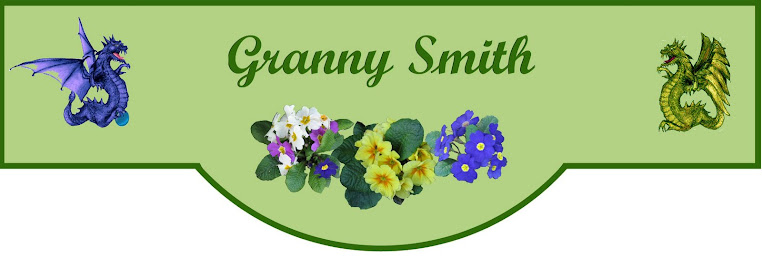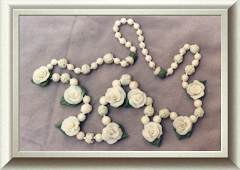 This adventure happened more than 40 years ago. Traveling as much as Otto and I did, we ran into quite a few adventures. They made good dinner conversation when we were with others.
This adventure happened more than 40 years ago. Traveling as much as Otto and I did, we ran into quite a few adventures. They made good dinner conversation when we were with others. The two photos with this story
The two photos with this storyare from a brochure from Lindblad Expeditions.
We took similar ones, but they are on slides
that I have been unable as yet to convert for my computer.
We gazed longingly at the photo murals of elephants and giraffes that papered their walls. “But perhaps--” The young clerk hesitated. “There’s another place you might try.”
Otto scribbled the address of Magical Mystery Tours. And we tried not to laugh as we remembered an old movie in which the tourists on a “magical mystery tour” had been stranded on an island that at first seemed to be paradise but where they gradually realized that they were probably in hell--literally--the one to which they were consigned after death.
We found the small sign for Magical Mystery Tours pointing up narrow stairs between ground floor store fronts. Its office was a tiny room with a desk, a few chairs and a few posters on the wall. Behind the desk sat a dark-haired woman in a sari.
“I can’t get you into a Landrover with a group,” she said. “But I can arrange a private car and driver.”
No, she assured us, it would not be more expensive. And we would stay in exactly the same facilities. We would go to one salt lick for night-viewing. We would go to either Amboselli national park or the Masai-Mara game preserve. And, by the way, we each would be allowed one small piece of baggage. Also we would be expected to dress for dinner--skirt or dress for me, tie and jacket for Otto.
Somewhat dubiously we paid for the five-day tour, which included everything, even meals. Our driver would handle all arrangements. He would pick us up at our hotel the following morning. Which he did.
Simon was probably in his twenties, very black, clad in blue jeans and a sport shirt. His car was a Datsun -- a very small Datsun that seemed crowded with just the three of us in it, rather than the four for which it was designed.
Orderly coffee plantations lined the well-paved highway from the city, the shiny leaves glinting in early morning light. Simon began to explain coffee cultivation to us and was somewhat nonplused to find that we knew more about it than he did, since we were owners of a coffee farm in Paraguay.
Flat land gave way to hills. Into the Kenyan highlands the road wound, through banana plantations, bamboo, lumber yards. The Aberdare Country Club sprawled in stonewalled rustic splendor on the crest of a hill. In the spacious wood-paneled hall a few other tourists lounged in deep leather chairs near the windowed walls. Two other Landrovers arrived and disgorged their eight or nine passengers.
“Goodbye,” said Simon. “I’ll see you tomorrow.” He and the other drivers departed. We had been fed into the highly organized tourist network that was coordinated by the Kenyan government. We and our fellow tourists would spend the night at The Ark.
It was mid afternoon when a bus pulled up to the front of the building, We tourists embarked as attendants stowed our bags. The bus took us higher through increasingly dense forest, with fewer and fewer small cultivated clearings, to our destination for the day and night: The Ark.
Set on stilts, the rustic building had Spartan rooms, each with two narrow cots. These were spread with snowy sheets and pillows, one gray blanket each and another on a shelf at the foot of the bed. There was also a bell, resembling a fire alarm, and a wall chart with the code: how many rings would mean rhinos, wart-hogs, elephants, etc.
The air up here was much cooler, and I was glad I had brought a sweater. It was not needed, however, in the viewing stand to which we were led. Above a balcony with tiers of seats glowed infrared heating lamps. Beyond, bright floodlights already added their brilliance to the late afternoon sunlight around the salt lick. They burned day and night, we were told, so that the animals would become completely accustomed to them. The resident naturalist pointed out elephants among the trees on a hill to our right, and everyone excitedly aimed binoculars or cameras. “You’ll have a better view of them tonight,” he said, but we snapped a lot of pictures anyway. Maybe he was right, but what if the elephants never came closer?
It was a glorious night of interrupted sleep as our buzzer sounded again and again. We would grab our cameras and the extra blanket to wrap around us, and, still half asleep, would stumble to the viewing gallery: A rhino and her child. Wart hogs, trotting with their tails erect like pennants. But most of all, elephants. Herd after herd arrived--not simultaneously--one group would leave before the next arrived, sometimes giving us half an hour of sleep before the buzzer again sounded. Some had young with them, well protected under the bellies of their elders. We found that there was some truth in the old joke that the way to determine the number of elephants is to count the lags and divide by four. The last group of elephants still lingered in dawn light (augmented, of course, by floodlights).
Otto and I dozed quite a lot in the Datsun as Simon drove us toward our next location. In waking moments we observed the land sloping below us checker-boarded with small farms, and Simon, who was proving to be a knowledgeable guide, told us about the problems of a land over-populated with farmers, not many with enough acreage to support a family. In late afternoon, now traveling on dirt roads, we began to pass tall Masai in native dress (or undress) with herds of emaciated cattle. When we pulled out our cameras, Simon demurred. We should get permission before taking a picture. Simon negotiated, we paid a fee of a few cents and took a picture or two.
At dusk, on an even more primitive road, we entered the Masai-Mara preserve. Simon braked suddenly. To our left, not more than twenty-five feet from us, lounged a male lion with magnificent mane. This time Simon was excited. After we took pictures of the lion, who seemed almost to be posing for us, Simon seemed reluctant to leave. It was our first hint of his passion for lions.
The Masai-Mara lodge was large, a big main building with dining hall, swimming pool, and recreation rooms, and with separate small groups of motel-like sleeping rooms so situated that each looked out on the open savanna. Dinner again was rather formal, served at candle-lit tables. Beyond the picture windows giraffes were silhouetted against the sky. The diners were warned not to go near the swimming pool at night; after dark it became a watering hole. We also had to wait to return to our rooms until an armed ranger could escort us; a cheetah had been spotted earlier in the day. Our room proved large and comfortable, with private bath and with draperies across the window wall. A strange rustling noise drew our attention. Pulling the curtain aside we found that zebras were munching grass at the doorstep. Who needed draperies? We opened ours wide, which rewarded us in the morning with a panorama of grazing Thompson gazelles, zebras, and a giraffe or two rocking along in the distance. On the path to the dining hall we met baboons. A male, standing upright, showed a lacquered looking turquoise-blue penis. His toothy grin did not look friendly. We gave him and his family a wide berth.
The very early breakfast, a lavish buffet, was followed by Game Drives. Tourists piled into the Landrovers that had brought them, Otto and I squeezed into Simon’s Datsun.
It soon became apparent that we were in for a visual feast of beasts. Gazelles grazed or loped along. A magnificent Eland posed on a rock as though for his photo. Otto’s telephoto lens proved superfluous when giraffes leaned over our car and a giraffe eye filled the frame of his viewer. Vultures and secretary birds feasted on carcasses, challenged by jackals and hyenas. And everywhere were zebras and wildebeests. The wildebeests were on their annual northward migration, and columns of them with hundreds, maybe thousands of members were constantly in sight. Simon sped the Datsun into the middle of a herd of wildebeests to give us action views of flailing hooves and flying manes.
As the day wore on, it became obvious that we, with our private and enthusiastic driver, had an advantage over the groups in the large Landrovers. Their drivers observed strict hours: two game drives a day of two hours each. Simon took us out for three hours in the morning and for both of the two-hour afternoon game drive slots between which other tourists had to choose. Simon generally followed the traditional game-observing routes but was willing to deviate from them at our request or at his own perception of a better photo opportunity. Sometimes we were in the company of other cars, sometimes not.
In the afternoon we again saw elephants. We were on the unpaved road back to the lodge for afternoon tea when a herd of about a dozen elephants approached the road in front of us. For all the world like a school crossing guard, the large leading elephant stepped out on the road in front of us, held her trunk stretched in front of her like a crossing guard’s stop sign and stood there until the last elephant had filed past her to the other side of the road. Then she hurried again to the front of the procession.
A group of female baboons, all with babies in their arms, sat in the shade of a large tree. Simon stopped the car so that we could watch them. Each seemed to be admiring the babies of the others, circulating to get better views of the small ones, each holding up her own with what appeared to be immense pride. Perhaps that was just my anthropomorphic viewpoint of what was happening.
In the late afternoon--the ultimate game drive of the day--we were with the Landrovers near a group of lionesses relaxing in the shade with their almost-grown cubs. Again Simon was really excited. Our little Datsun did not afford us the same views as the open tops of the tall Landrovers. Simon jockeyed for a position in the front row--and ignominiously wound up stuck on a tussock of grass that was taller than the bottom of our car. It needed a push from a Landrover to get us moving again. Still, Simon was the last driver to leave the scene, and we were rewarded with the sight of a lioness cuffing the rambunctious youngster who bit her ear in play.
The next morning the news was of a leopard in the neighborhood. This was rare. The entire flotilla of tourists, including us, set out for the area in which it had been spotted (no pun intended!).
All we saw there were the usual (yawn) giraffes grazing on the treetops. And before we quite knew what was happening, Simon was heading back to where we had seen yesterday’s lions. Along the way he harassed a few more wildebeests by swerving the Datsun into their midst. And then his face lit up with enthusiasm. In a sparsely wooded ravine, a small gash in the wide savanna, he spotted a group of lions--or lionesses, to be exact.
We took a few pictures from a distance. Then Simon said, “I can get you closer.” He turned the Datsun smartly along the edge of the ravine. The grass was tall. None of us saw the deep erosion at right angles to the ravine until the front wheels of the Datsun suddenly plunged into it. The bottom of the car sat firmly on the edge of the eroded crevasse. The back wheels spun as Simon gunned the engine to try to move us either forward or backward. Dust flew. The tires smoked. We didn’t move. The car was well and truly hung up.
 Every time the motor gunned and the wheels spun, the lionesses became more alert and interested. They seemed to be sensing a wounded animal. They crept closer, tails switching, until they were only a few feet from us. After a bit, Simon cautiously edged his door open. A lion let out a tremendous roar. He jumped as he slammed the door. “Did I do that?!” he asked.
Every time the motor gunned and the wheels spun, the lionesses became more alert and interested. They seemed to be sensing a wounded animal. They crept closer, tails switching, until they were only a few feet from us. After a bit, Simon cautiously edged his door open. A lion let out a tremendous roar. He jumped as he slammed the door. “Did I do that?!” he asked.From time to time Simon would start the motor again and spin the wheels until they smoked. We were afraid he would set the car or the tall dry grass afire from the friction. I had pictures of headlines in the Berkeley Gazette saying TOURISTS EATEN BY LIONS AS THEY FLEE BURNING AUTO. Simon heeded our warning. We sat. Surely someone would happen by soon to rescue us.
The sun rose toward noon. We had closed the windows on the lion side of the car, and the air became hotter and hotter. We opened the windows a few inches . There was no breeze. We were getting thirsty. No water. My eyes and nose began to water. I had a full-blown case of allergy and only one handkerchief.
Across the horizon trooped thousands upon thousands of wildebeests. That horizon was not very far away, either, since we were in a shallow valley.
Noon passed. Otto divided three ways the banana he had picked up at the breakfast buffet. I pulled out pen and postcard and wrote to Loren, our oldest grandchild. “This is an adventure. An adventure is when you don’t know how it will turn out. At least this will make a good story someday.”
We imagined lunch at the lodge. We pictured the Landrovers starting out on the first of the afternoon game drives, and hopefully we scanned the landscape for a glimpse of one. Apparently the afternoon attraction was elsewhere. Once we sighted an official Jeep with two park rangers. We honked and waved wildly, but they either didn’t see us or ignored us. Our commotion only excited the lionesses, who crept even closer, with avid eyes.
We were hungry and thirsty and hot. We were tired of wildebeests. The afternoon wore on. It became apparent that this was not a goal for the second afternoon game drive either. We imagined afternoon tea at the lodge.
It was very late in the day when we heard a vehicle, and, around a corner of the wooded ravine a large bus appeared with a sign over its windshield proclaiming it “Hotel California.” And, miracle of miracles, it had a winch attached to its front. It turned out to be full of New Zealand students who were on a camping trip. Two of them unfurled a canvas which they held between the lions and the rest of us, while another New Zealander held a tent pole like a spear, just in case. Lions, they assured us, don’t notice people who are out of sight. That’s why their expedition could sleep in tents without fear of lion attacks. They attached the winch to our bumper, backed the bus to about a hundred yards away and slowly reeled our car onto solid ground.
Back at the lodge teatime had passed. Reluctantly they dredged up some cookies for us. But we were already behind schedule for our next hotel at Lake Nakuru. Off again on the dusty roads through the dark. Otto dozed in the back seat, but I sat in front with Simon, mainly because I was afraid he might fall asleep at the wheel. I kept a conversation going and learned a lot about his life, all of which I have since forgotten.
At Lake Nakuru I was too tired to go to the late dinner. I went to bed surrounded by a canopy of mosquito netting. Simon brought me dinner on a tray. Lamb chops.
The next morning Simon was surprised when we appeared in the dining room for breakfast, completely recovered. He had thought we would want to return to Nairobi rather then spend a day seeing great flocks of flamingos, cute little Dik-diks (the smallest of the antelopes, about the size of hares), and other things that would be new to us.
I love to travel. Travel encompasses the unknown, the unexpected, the variousness of a wide and wonderful world
I was born under a wandering star.


























